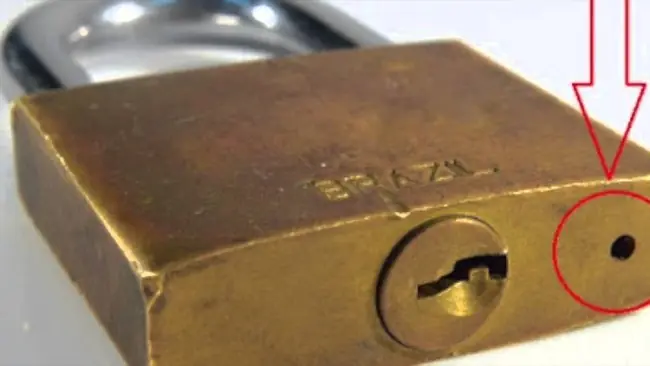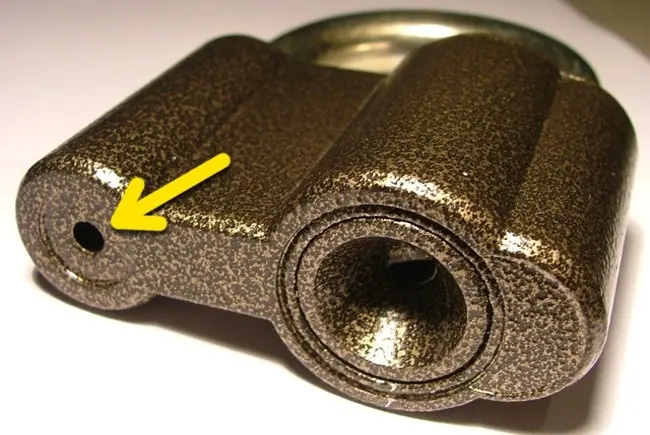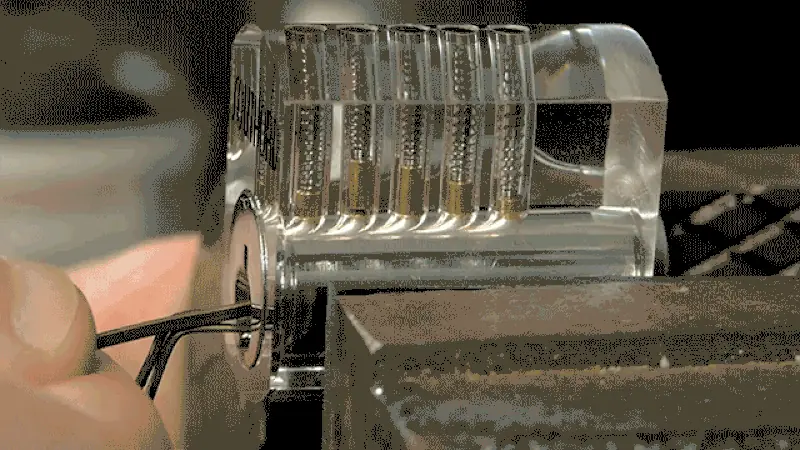Have you ever noticed a tiny hole next to the keyhole on your padlock? If you have, you might have wondered what its purpose is. No, it’s not a flaw in the design or an easy way for thieves to break into your lock. In fact, this small but significant feature plays a crucial role in keeping your lock functioning properly.
Let’s dive into the mystery behind this tiny hole and discover why it’s an essential part of every lock.
The Tiny Hole in a Lock – What Is It For?

If you take a closer look at your padlock, especially those used for outdoor gates, storage units, or lockers, you’ll find a small hole near the keyhole. While most people don’t pay attention to it, this seemingly minor detail serves two important functions.
1. A Drainage System to Prevent Rust and Freezing
One of the primary purposes of this tiny hole is to drain water out of the lock.
- Many padlocks are used outdoors, where they are exposed to rain, snow, and humidity. Without this small hole, water could accumulate inside the lock, leading to rust and corrosion over time.
- In colder climates, water trapped inside the lock can freeze, causing the lock mechanism to jam or even break. The tiny hole allows excess water to escape, preventing internal damage.
This simple but effective design extends the lifespan of locks and ensures they continue functioning properly, even in extreme weather conditions.
2. A Lubrication Point for Smooth Functioning
Over time, locks can become stiff due to dust, dirt, and lack of lubrication. If you’ve ever struggled to turn a key in a stubborn lock, you know how frustrating it can be.
- The small hole acts as an access point for lubricants, allowing you to oil the internal mechanism easily.
- Spraying a bit of WD-40 or graphite lubricant through this hole helps keep the lock smooth, preventing wear and tear.
By using this hole to lubricate your lock regularly, you can ensure that it remains in top condition for years to come.
Debunking the Myths About the Tiny Hole
Since most people don’t know about this feature, various myths have emerged about its purpose. Let’s set the record straight!
Myth 1: It’s a Weak Spot for Thieves to Break the Lock
Some believe that the tiny hole makes locks easier to break or tamper with. This is completely false!
- The hole does not weaken the lock’s structure. It is merely a functional design feature for maintenance.
- High-quality locks are built with solid internal components, making them resistant to forced entry.
Myth 2: The Hole Is a Manufacturing Defect
Another misconception is that the hole is an accidental flaw in the lock’s design. In reality, it is an intentional feature that helps prevent long-term damage.
- Most leading lock manufacturers include this hole in their designs to enhance durability.
- If you look at different brands, you’ll notice that nearly all outdoor padlocks have this tiny hole, proving its importance.
How to Use the Tiny Hole to Maintain Your Lock

Now that you know the purpose of this small hole, here’s how you can use it to keep your locks in perfect shape:
1. Regularly Drain Water
If your lock is exposed to rain, occasionally turn it upside down and shake out any excess water through the hole. This helps prevent moisture buildup inside the lock.
2. Apply Lubrication Through the Hole
Use a small nozzle spray bottle or straw attachment to apply graphite lubricant or silicone-based oil directly into the hole.
- Do this every few months to keep the internal mechanism moving smoothly.
- Avoid using heavy grease, as it can attract dust and dirt, which may cause clogging.
3. Prevent Freezing in Cold Weather
If you live in an area with harsh winters, consider spraying a small amount of de-icer or lubricant into the hole before the cold season begins. This prevents water from freezing inside and damaging the lock.
Why This Tiny Hole Is a Brilliant Engineering Detail

Padlocks may seem simple, but they are designed with precision and durability in mind. The tiny hole is a small yet crucial feature that:
- Prevents rust and corrosion by allowing water to drain.
- Ensures smooth operation by providing an entry point for lubrication.
- Increases the lock’s lifespan, reducing the need for frequent replacements.
It’s a perfect example of how minor design elements can make a significant difference in functionality and longevity.
Final Thoughts: A Small Detail with a Big Impact
The next time you look at a padlock, you’ll know that the tiny hole next to the keyhole isn’t just a random imperfection—it’s a well-thought-out feature designed to protect and maintain your lock.
Understanding these small engineering details can help you take better care of your locks, ensuring they work efficiently for years. So, if you ever struggle with a rusty or jammed lock, remember to check for the tiny hole—it might just save the day!


